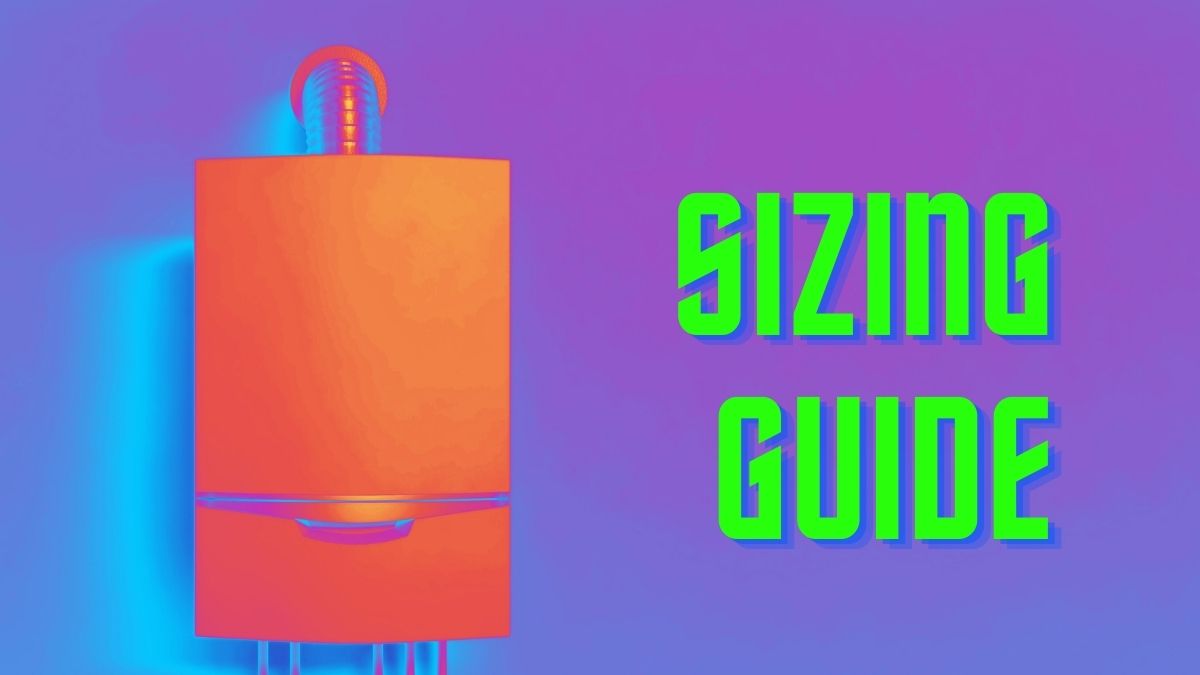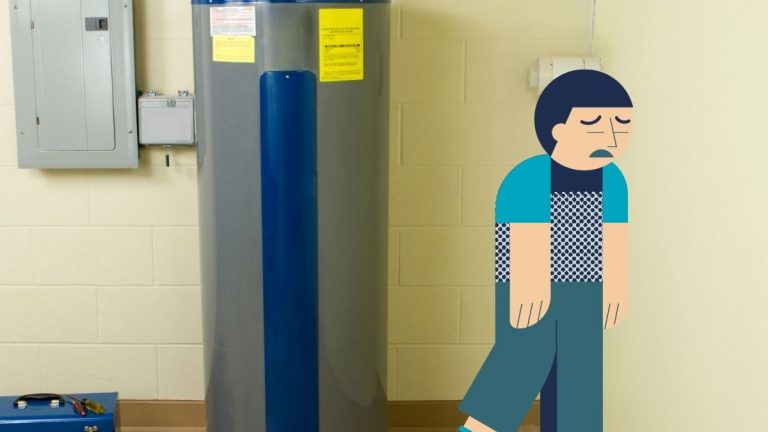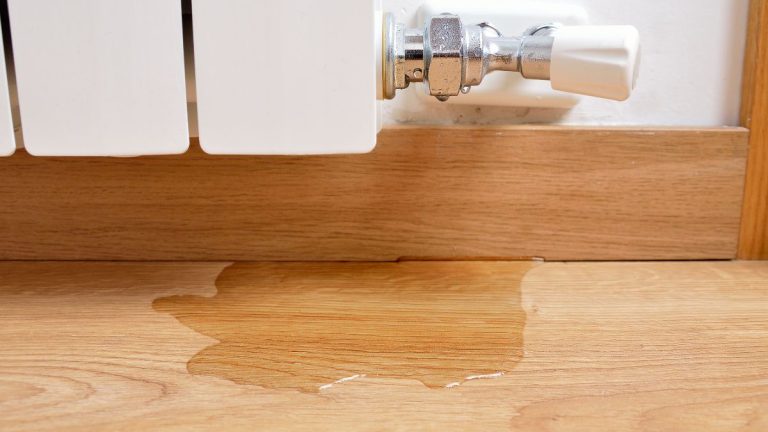Guide: What Size Tankless Hot Water Heater Do I Need?
Lately, tankless water heaters are gaining a lot of traction thanks to the array of perks that it comes with. High energy efficiency, on-demand unlimited hot water, small compact size, and low energy bills are some of the best things about this technology.
So yeah, switching from your old tank water heater with a tankless water heater or buying one for your new home project can be a great decision.
But the big question is;
What size tankless hot water heater do you need?
Get a small one for the sake of saving money and curse yourself for years cause you never get enough hot water. Or buy a bigger one than you need and spend extra when it wasn’t required. That’s why proper size is central for peace of mind.
But before we size, what’s different with tankless water heaters?
Unlike tank water heaters, tankless does not store hot water. Instead, it heats and delivers hot water instantly and on-demand.
There’s an upper limit to how much hot water a tankless water heater can deliver per minute which is measured in gallons per minute or GPM and it’s an important factor when sizing a tankless system. Learn about the pros and cons of tankless water heaters here.
Things you need to consider while deciding the size of the tankless water heater
Determining the size of a tankless water heater that’s best suited for your household can be easy if you know what to look for.
Following are the only two things that you need to figure out to find out the suitable size for your needs.
1. Temperature rise
Temperature rise is how much temperature of the cold water is needed to be raised to get to the desired temperature. The colder the water, the higher the temperature rise will be.
It is an important factor when it comes to the hot water output of your tankless water heater. This is because the colder the water, the harder the heater has to work to raise the temperature.
Ok. To find out your desired temperature rise, you need two temperature data points.
First up, you need to find out the groundwater temperature at your home. You can use a thermometer to find that or check out this US map below for average temperatures in your region.
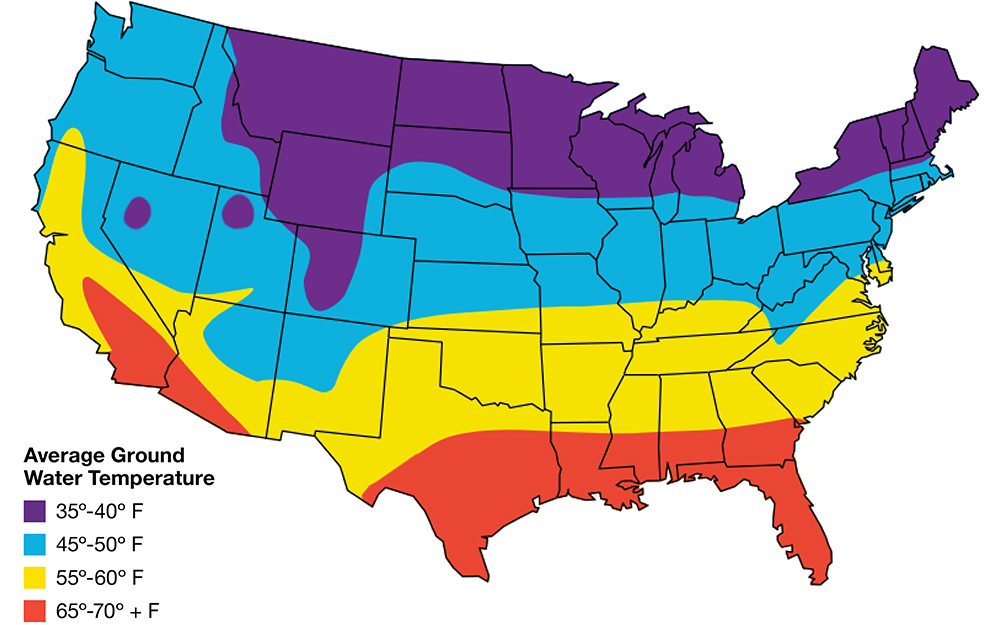
For example, in Florida the groundwater temperature is 77°F.
Next up, the desired hot water temperature. Usually, people use 105°F hot water for the shower.
Yours can be different.
Now subtract cold water temperature from desired hot water temperature and you get your temperature rise.
Desired temp. – groundwater temp. = Temp. Rise
For the above situation,
105 – 77 = 28°F
The higher the temperature rise, the lower the maximum hot water flow rate gets. That’s why the same tankless water heater that delivers 5 GPM hot water in Florida can only render 2-3 GPM hot water in Alaska or Minnesota. Because the water in Alaska is twice as cold in Florida and thus heater has to work double hard.
2. Peak hour usage
Now that hopefully, you know the desired temperature rise you need, the next step in sizing a tankless water heater is PHU.
PHU or peak hour usage is the maximum number of hot water fixtures you can possibly use at the same time.
It’s important, cause as said before, there’s a limit to how much hot water tankless units can deliver per minute and you will want to make sure that it delivers enough to satisfy your peak hour usage.

So think about the time of the day when there’s a lot of hot water usage.
For most households, it’s morning time when someone is in the shower, another using the bathroom sink to brush teeth, and mother preparing food using the kitchen sink.
You have to determine how many maximum hot water outlets you can use at the same time and add that up to find your peak hour usage in GPM.
If we consider the example discussed above then,
Shower (2 GPM) +bathroom sink (1 GPM) + kitchen sink (1.5 GPM) = 4.5 GPM
You will have to look for a tankless water heater that can deliver hot water at 4.5 GPM. * The above GPM values that we calculated are standard and the GPM of fixtures at your home could be different.
The standard flow rate of different fixtures
| Fixture | Flow Rate (GPM) |
|---|---|
| ShowerHead | 2 |
| Bathtub | 2.5 |
| Bathroom Faucet | 1 |
| Kitchen Faucet | 1.5 |
| Washing Machine | 3 |
The above flow rates are national averages and the flow rate of your fixtures could be different. Use this guide at the spruce to measure the flow rate of your fixture.
3. Adding up
Now you know your temperature rise as well as your peak hour usage so now all you have to do is search for a tankless water heater from your favorite brand and try to match these parameters. If we consider the above example then we need a tankless water heater with a minimum 4.5 GPM flow rate at a temperature rise of 28°F.
Now let’s take another example so you can better understand the sizing concept.
Tankless water heater sizing example
Suppose you are a family of 4 living in Minnesota with a groundwater temperature of 38°F. You have two bathrooms in your household and would like to use two showers and a kitchen sink at the same time. What tankless water heater size you should look for?
Solution. First up, 38°F is your incoming cold water temperature. To take shower or for a kitchen sink you would, let’s say, need 110°F hot water. Then the temperature rise here is 110-38=72°F.
Next, two showers and a kitchen sink are your peak hour usage. If we calculate total GPM based on standard GPM of shower head and sink faucet, then
2+2+1=5 GPM.
So for the above example, you will need a tankless water heater that can deliver hot water at 5 GPM with a minimum 72°F temperature rise. You need a tankless water heater that can match or exceed this specification.
Ready with your size? here are the top electric tankless water heaters that you can choose from.
Popular tankless water heater sizing questions

What size tankless water heater do I need for two bathrooms?
While the answer to this question might depend on some variables but I’ll try to give a standard answer.
Let’s say you want to use both showers simultaneously and the flow rate of the showerhead is 2 GPM. Then, you will have to buy a tankless water heater with at least a 2+2=4 GPM flow rate at your specific temperature rise.
You could also use low-flow showerheads that have a low flow which can allow you to use a smaller tankless water heater and will also save water.
What size tankless water heater to replace a 30 or 50-gallon tank?
Tankless water heater size can not be determined based on what size tank water heater you had or have. I wish it was that simple. But it’s not hard either. It just doesn’t depend on how much hot water you use in an hour.
Instead, what matters when sizing is how many hot water fixtures you can use simultaneously at any given time and then add up all of them in GPM. Refer to the three-step procedure above to determine the size.
How to not size a tankless water heater?
Finding the correct size of tankless water heater can be intimidating especially if you have been using a tank and are new to this technology.
And there are some wrong ways people use to size a tankless water heater that may cause you to inconvenience down the line. So let’s just get to know them first hand.
First, never just try to deduce the size of the tankless water heater based on the number of family members. While it may seem logical but it’s not a tank water heater that you will want to make sure have sufficient water stored for everyone.
Also, a lot of people might think this way, but replacing a 50-gallon tank water heater with a 5 GPM tankless water heater is not the right way. This way, you would undersize or oversize as well.
So the best way to size a tankless water heater is, yes, mentioned above, peak hour usage and temperature rise.
Gas or electric tankless water heater?
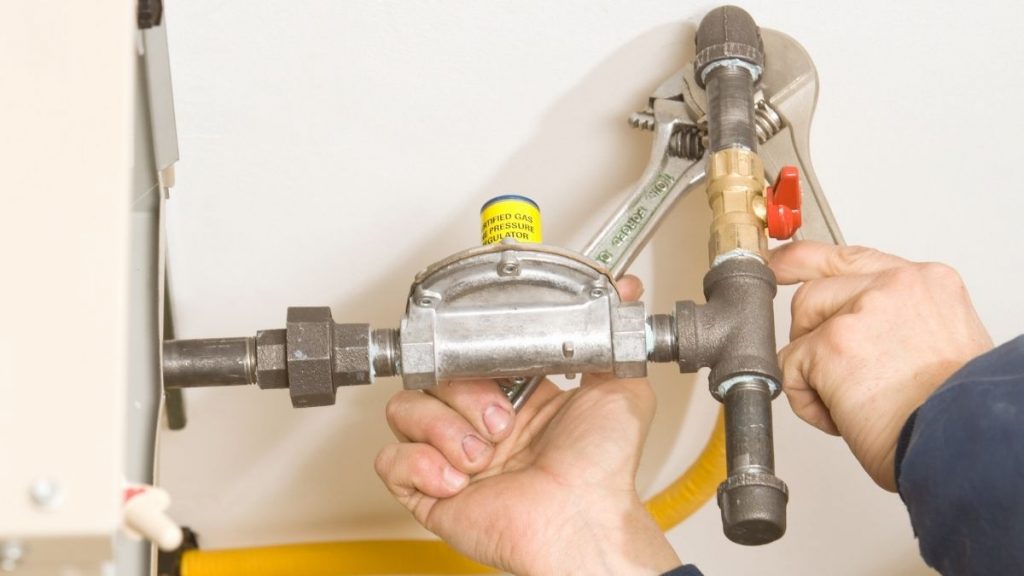
This might not make a lot of difference in warmer climates but it does in colder ones and for bigger families.
Gas-powered tankless water heater tends to heat water faster than electric counterparts. So these are more suitable for the colder, southern regions.
Also, gas tankless water heaters tend to last 5-7 years longer than electric units.
The drawback however with gas models is the higher upfront cost. Gas tankless units can cost twice as much compared to electric units. And then there are venting and gas lines that you need to take care of. Learn more about gas vs electric water heaters here.

